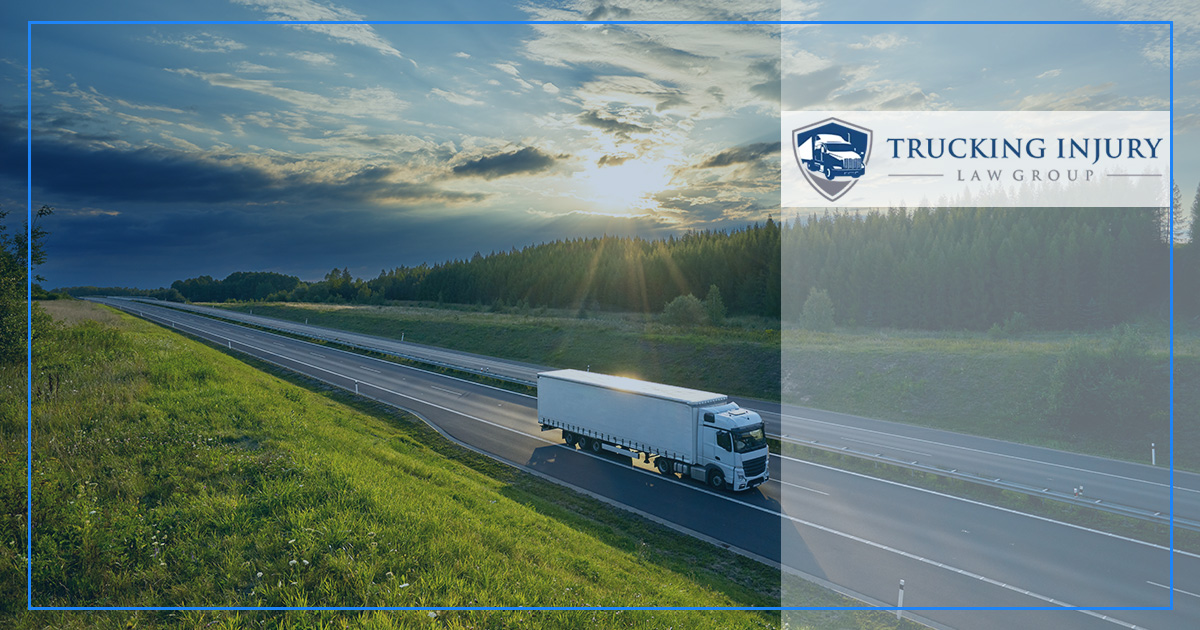Why Are Larger Vehicles Like Trucks Less Stable?
The many freeways and Interstates of the Pacific Northwest allow for massive amounts of commercial trucking, connecting us across the nation and around the world.
An unfortunate reality of this, however, is that driving larger vehicles like commercial trucks (and sharing the road with them) can present unique challenges compared to smaller vehicles.
While trucks are essential for transporting goods and heavy loads, their design and function inherently make them less stable.
Below, we’ll explore why larger vehicles like trucks are less stable, emphasizing the key elements that drivers and fleet managers must understand to ensure safety and efficiency on the road.
Understanding Vehicle Stability
The stability of a large vehicle or “semi-truck” is based on two basic factors, the vehicle’s center of gravity, and the weight and distribution of its load.
Center of Gravity
The main reasons larger vehicles like trucks are less stable is their higher center of gravity, torque, and equilibrium. The center of gravity is the point where the vehicle’s main mass is concentrated.
In trucks, especially those carrying heavy loads, the center of gravity is much higher from the ground than it is in smaller vehicles. This higher center of gravity makes trucks more prone to tipping over, especially when making sharp turns or sudden lane switches.
Truck drivers have to be aware of this characteristic and adjust their driving, taking turns more slowly and avoiding abrupt lane changes.
Weight Distribution
Weight distribution also plays a major role in stability. In trucks, the majority of the weight is often distributed unevenly due to the cargo. Improperly loaded, unbalanced cargo, or oversized loads can significantly impact a truck’s stability.
For example, if most of the load weight is on one side of the truck, the vehicle will lean and become unstable. The load must be evenly distributed and properly secured to maintain stability.
Proper training on loading techniques and regular cargo inspections can help to prevent these instability issues.
Deadheading
Deadhead trucking refers to driving a truck with an empty trailer.
This often happens when a trucker completes a delivery and then must travel without any cargo to another location to pick up a new load. Empty trailers can sometimes be more challenging to control, especially in adverse weather conditions, than full ones.
Without the weight of cargo, trucks may have less traction and stability, increasing the risk of accidents.
A swaying trailer on a semi-truck is a good sign that it’s empty and, especially in windy weather, it’s a good idea for other drivers to keep a little extra distance, just in case.
Impact of Environmental Factors
Certain environmental factors contribute to making large vehicles like trucks less stable, including:
Wind Sensitivity
Wind and other environmental factors can cause instability in trucks because of their larger surface area and higher profile. Crosswinds can suddenly push against the side of a truck, like a sail, causing it to slip, sway, or even veer off course.
This wind sensitivity is even more dangerous at higher speeds or on open roads where there are fewer natural windbreaks. Drivers must recognize and respond to wind conditions, adjusting their speed and maintaining a firm grip on the steering wheel to deal with the effects of crosswinds.
Road Conditions
The condition of the road, of course, can also play a major role in stability.
Uneven or poorly maintained roads can increase instability issues for trucks. Potholes, broken blacktop, and other road damage can cause a truck to bounce or shift unexpectedly, leading to a loss of control.
Drivers should be watchful, adjusting their driving speed based on the road conditions and ensuring that they have enough time to react to any problems.
Mechanical and Design Considerations
Other factors related to driving technique and road engineering can impact a truck’s stability in some of the following ways:
Braking Distance
Due to their greater mass and momentum, big rigs require much longer braking distances to come to a complete stop than smaller vehicles.
In emergency braking situations, these longer stopping distances can add to instability, especially if the driver has to swerve to avoid an obstacle or their load is already off balance. Maintaining a safe following distance and being aware of the vehicle’s braking capabilities are essential for truck drivers to ensure stability during sudden stops.
The Federal Motor Carrier Safety Administration (FMCSA) recommends allowing one second of braking distance for every 10 feet of the semi’s length, plus an extra second when traveling at speeds above 40 miles per hour. This is why other drivers should always allow a generous distance between themselves and any commercial vehicle behind them.
Suspension Systems
The suspension system of a big truck is designed to support extremely heavy loads, but it can also have an impact on overall stability.
The stiffer suspension systems necessary for carrying large loads can result in a rough ride and make the truck more prone to bouncing or tipping on uneven surfaces. According to the Insurance Institute for Highway Safety, almost 50% of truck occupant deaths happen in crashes where the truck rolls over.
Regular maintenance of the suspension system is important so that it functions correctly and provides the needed support without compromising the truck’s stability.
The Role of Technology in Enhancing Stability
Technology also plays a role as to how stable a truck is in the following ways:
Electronic Stability Control
Advancements in driving technology have given us systems like Electronic Stability Control (ESC) that can help enhance the stability of these larger vehicles. ESC systems use sensors to monitor the vehicle’s movement and immediately detect any signs of instability.
If the system detects any instability, it automatically applies brakes to individual wheels and reduces engine power, helping the driver regain control. Incorporating ESC into trucks has significantly reduced the risk of rollover accidents and improved overall driving safety.
Advanced Driver Assistance Systems
Advanced Driver Assistance Systems (ADAS), such as lane departure (drift) warnings, adaptive cruise control, and collision avoidance systems, also help contribute to the stability of larger vehicles.
These systems offer real-time feedback to drivers, helping them maintain control and avoid potential dangers that they otherwise might not be aware of until it’s too late. Lane departure warnings, for example, alert the driver if they unintentionally begin to drift out of their lane, reducing the risk of side collisions or rollovers.
ADAS technology can greatly enhance the safety and stability of trucks on the road.
Understanding the things that contribute to the instability of larger vehicles like commercial trucks is crucial for both drivers and fleet managers.
By recognizing the impact that a higher center of gravity can have, as well as the possible effects of weight distribution, environmental conditions, and mechanical considerations, and maintaining safe driving practices, the stability of these vehicles can be significantly improved.
By leveraging technologies like ESC and ADAS, drivers and trucking companies can enhance safety even further to help reduce the risk of accidents.
Have questions about any of the information in this post? Contact us at Trucking Injury Law Group. One of our experienced Seattle truck accident attorneys would be happy to answer them.






